Follow These 4 Steps to Get the Most Out of Your Contingent Workforce
Posted on February 18th, 2020 Read time: 4 minutes

The gig economy in 2020 is sexier than ever. Contingent workers have shaken up the business world, and it’s a win-win for both temporary workers and companies. However, leaders often undervalue freelancers and independent contractors — assuming that contingent workers are just bargain-basement workers. Yes, 1099 workers are flexible and cost-effective, but they’re not necessarily a quick fix.
Over one-third of American professionals work in the gig economy in some capacity, according to a poll from Gallup. Companies have noticed, and they’ve upped their use of freelancers and independent contractors to fill in gaps and improve productivity.
Indeed, gig workers are a boon to businesses of all sizes — from small startups to Fortune 500 enterprises. Best of all, the magic happens on both sides of the equation. The same Gallup poll found that 64% of gig workers said the gig economy allows them to do work they enjoy, and seven in 10 organizations rely on contingent labor to stay within healthy payroll parameters.
However, the gig economy can present some challenges for businesses. In fact, some have no streamlined structure. Instead, managers cobble together contingent labor plans on a case-by-case basis, plugging holes as needed instead of plotting a full strategy. By being proactive, you can reap all the benefits of working with contingent team members — whether that means reducing operational expenditures or bringing in subject matter experts temporarily. Start with these steps:
1. Pay Attention
The workforce in 2020 is dramatically different than the workforce of several years ago. Companies are employing remote and contingent workers as technologies evolve to fuel these changes. There are few companies that now employ only full-time workers who are in the office every day. Nontraditional workers can be a huge benefit for companies and employees, but companies have to ensure that stakeholders are embracing them.
Planning sessions are an excellent place to begin discussions about a nontraditional workforce and how best to use these employees. Contingent workers can not only save the company money, but they can also help with special projects, which frees up your full-time employees’ schedules for more mission-critical items.
2. Assess the Current Use of Your Contingent Workforce
Most company leaders don’t have good visibility into how many contingent workers are being used companywide. The easiest way for you to maximize your contingent workforce is to, first, get a handle on how the business is currently engaging it. Examine your entire workforce cross-departmentally. For example, are supervisors or departments already outsourcing projects? If so, how are the contingent workers vetted and onboarded?
You might be surprised by how often siloed departments turn to freelancers or independent contractors without consulting top management or HR. A gig economy report from EY shows 37% of companies that use contingent laborers don’t have set protocols in place for managing them. This doesn’t mean that managers are renegades making bad decisions, but it does make a case for identifying, streamlining, and regulating contingent workforce-related processes.
After standardizing contingent worker structures and expectations, you can begin to set and track key performance indicators related to contingent talent adoption. Over time, this data can help you tweak your freelancer and independent contractor use to amplify the gig economy’s payoffs.
3. Develop a Strategy
Now that you’ve brought awareness to the benefits of a contingent workforce for your organization, it’s time to get to work. You’ll need to determine the best places to use these workers in the organization.
Outline your company’s priorities to determine what kind of strategy you need to create. For instance, does your company need to bring in better talent, or are you trying to reduce costs or risk? This will inform where and when you should hire contingent workers. Look at your company’s needs now and down the road. If your company is trying a new initiative, it might make sense to hire 1099 workers until you determine whether the initiative is viable. Companies that experience seasonal or temporary business surges should certainly consider contingent help.
Many organizations are already using gig workers, and many others are showing interest in contingent workers because of the potential cost savings and flexibility. Besides, you can start building relationships with gig workers who might eventually become superstar employees.
4. Ensure Compliance
Your company may need an objective opinion at some point to help you mitigate risk, remain compliant, and enhance your return on investment. This is especially true if your workers are in California — where the new AB5 law went into effect on Jan. 1, 2020. The law changed the rules around how employers determine whether workers are employees or independent contractors.
Companies that run afoul of employment laws could face heavy IRS penalties, even for one infraction, so it’s essential to be aware of all the rules for every state, city, or other jurisdiction in which you have workers. Alternatively, you can outsource your workforce compliance efforts to an experienced employer of record so you don’t have to worry about the frequent changes in employment laws in each state.
To get started and optimize your contingent workforce program, use the “Contingent Workforce Road Map.” This free tool will walk you through considerations — step by step — including assessing contingent worker usage, determining realistic spend across departments, and rating your current vendors.
Whether you need help optimizing your existing contingent workforce program or creating a brand new program from scratch, Innovative Employee Solutions (IES) is here to help. We can save you time and reduce your costs while giving your business more flexibility.
Related Articles
Posted on February 18th, 2020 Read time: 4 minutes

The gig economy in 2020 is sexier than ever. Contingent workers have shaken up the business world, and it’s a win-win for both temporary workers and companies. However, leaders often undervalue freelancers and independent contractors — assuming that contingent workers are just bargain-basement workers. Yes, 1099 workers are flexible and cost-effective, but they’re not necessarily a quick fix.
Over one-third of American professionals work in the gig economy in some capacity, according to a poll from Gallup. Companies have noticed, and they’ve upped their use of freelancers and independent contractors to fill in gaps and improve productivity.
Indeed, gig workers are a boon to businesses of all sizes — from small startups to Fortune 500 enterprises. Best of all, the magic happens on both sides of the equation. The same Gallup poll found that 64% of gig workers said the gig economy allows them to do work they enjoy, and seven in 10 organizations rely on contingent labor to stay within healthy payroll parameters.
However, the gig economy can present some challenges for businesses. In fact, some have no streamlined structure. Instead, managers cobble together contingent labor plans on a case-by-case basis, plugging holes as needed instead of plotting a full strategy. By being proactive, you can reap all the benefits of working with contingent team members — whether that means reducing operational expenditures or bringing in subject matter experts temporarily. Start with these steps:
1. Pay Attention
The workforce in 2020 is dramatically different than the workforce of several years ago. Companies are employing remote and contingent workers as technologies evolve to fuel these changes. There are few companies that now employ only full-time workers who are in the office every day. Nontraditional workers can be a huge benefit for companies and employees, but companies have to ensure that stakeholders are embracing them.
Planning sessions are an excellent place to begin discussions about a nontraditional workforce and how best to use these employees. Contingent workers can not only save the company money, but they can also help with special projects, which frees up your full-time employees’ schedules for more mission-critical items.
2. Assess the Current Use of Your Contingent Workforce
Most company leaders don’t have good visibility into how many contingent workers are being used companywide. The easiest way for you to maximize your contingent workforce is to, first, get a handle on how the business is currently engaging it. Examine your entire workforce cross-departmentally. For example, are supervisors or departments already outsourcing projects? If so, how are the contingent workers vetted and onboarded?
You might be surprised by how often siloed departments turn to freelancers or independent contractors without consulting top management or HR. A gig economy report from EY shows 37% of companies that use contingent laborers don’t have set protocols in place for managing them. This doesn’t mean that managers are renegades making bad decisions, but it does make a case for identifying, streamlining, and regulating contingent workforce-related processes.
After standardizing contingent worker structures and expectations, you can begin to set and track key performance indicators related to contingent talent adoption. Over time, this data can help you tweak your freelancer and independent contractor use to amplify the gig economy’s payoffs.
3. Develop a Strategy
Now that you’ve brought awareness to the benefits of a contingent workforce for your organization, it’s time to get to work. You’ll need to determine the best places to use these workers in the organization.
Outline your company’s priorities to determine what kind of strategy you need to create. For instance, does your company need to bring in better talent, or are you trying to reduce costs or risk? This will inform where and when you should hire contingent workers. Look at your company’s needs now and down the road. If your company is trying a new initiative, it might make sense to hire 1099 workers until you determine whether the initiative is viable. Companies that experience seasonal or temporary business surges should certainly consider contingent help.
Many organizations are already using gig workers, and many others are showing interest in contingent workers because of the potential cost savings and flexibility. Besides, you can start building relationships with gig workers who might eventually become superstar employees.
4. Ensure Compliance
Your company may need an objective opinion at some point to help you mitigate risk, remain compliant, and enhance your return on investment. This is especially true if your workers are in California — where the new AB5 law went into effect on Jan. 1, 2020. The law changed the rules around how employers determine whether workers are employees or independent contractors.
Companies that run afoul of employment laws could face heavy IRS penalties, even for one infraction, so it’s essential to be aware of all the rules for every state, city, or other jurisdiction in which you have workers. Alternatively, you can outsource your workforce compliance efforts to an experienced employer of record so you don’t have to worry about the frequent changes in employment laws in each state.
To get started and optimize your contingent workforce program, use the “Contingent Workforce Road Map.” This free tool will walk you through considerations — step by step — including assessing contingent worker usage, determining realistic spend across departments, and rating your current vendors.
Whether you need help optimizing your existing contingent workforce program or creating a brand new program from scratch, Innovative Employee Solutions (IES) is here to help. We can save you time and reduce your costs while giving your business more flexibility.






